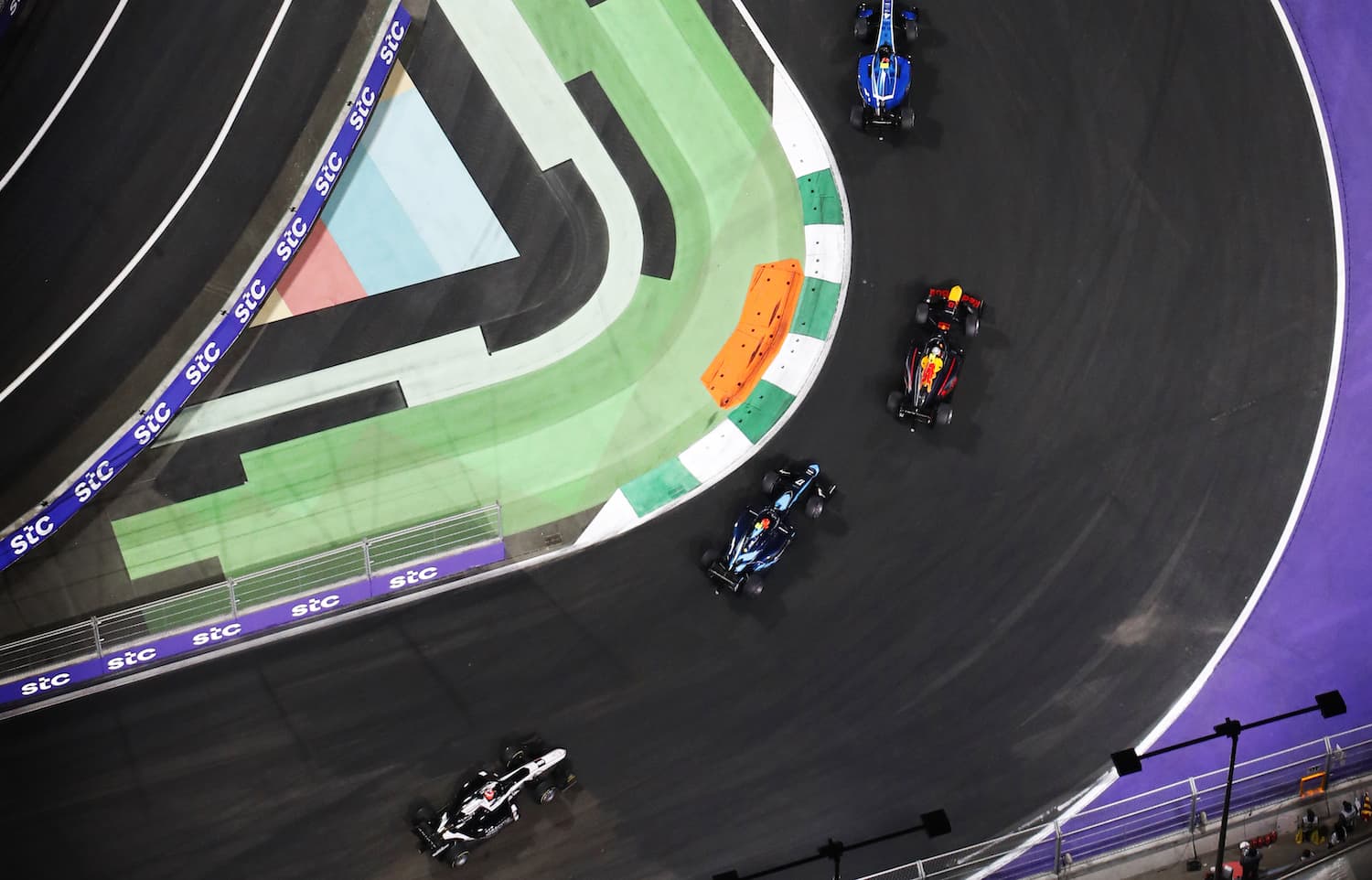The huge success of the Formula 1 stc Saudi Arabian Grand Prix 2021 saw the Jeddah Corniche Circuit officially confirmed as the world’s newest, longest and fastest street track whilst also winning fulsome praise from F1 drivers, media and fans alike.
However, there is another record which has not yet received the attention it deserves: it was also the fastest that any Formula 1 circuit has ever been built, a feat that would not have been possible without the impressive work by UNIMAC, a leading Saudi Class 1 infrastructure company established in 1979 with a focus on asphalting, that lead work on the circuit construction with its team of dedicated local workers and engineers working with locally sourced materials
As the Official Circuit Construction Partner of the Formula 1 stc Saudi Arabian Grand Prix, UNIMAC accepted a challenge unlike any faced by an F1 promoter before and succeeded in rising to the occasion.
The 6.175km track, officially approved by the FIA to host Saudi Arabia’s first ever Formula 1 Grand Prix last December, was designed on the Jeddah Corniche from which it derives its name. The creation of the brand-new street track required the initial full demolition of the site and subsequent construction from the ground up of the circuit alongside all its support facilities. While technically labeled a street circuit, the construction was so extensive that it’s development was on a par with that of a permanent track. As the fastest F1 street circuit yet with average speeds reaching 252.8km/h, and second longest overall on the F1 calendar behind only the famous Spa-Francorchamps circuit, it boasts 27 Turns –the highest number of any circuit in F1 alongside the Marina Bay Circuit in Singapore with many tight corners, banked sections and high-speed sectors.
It is difficult to summarize the sheer magnitude of the work entailed in this undertaking. The project required 478,000m2 of demolition, 212,000m3 of excavation, 99,000m3 of fill, 190,000m3 of subbase and aggregate base course layers, and 212,000m2 of the most advanced asphalt paving. Also included in this was 8,000 linear meters of slot drains, 3,500 linear meters of U-drains, 9,500 linear meters of pipes (combining potable water, sewage, and firefighting), and 177,500 linear meters of LV/MV electrical cables extended and connected.
In layman’s terms, it was a monster of a project executed in an extremely tight schedule, during a COVID pandemic.
Given the formidable challenges faced, UNIMAC placed great scrutiny on HSE procedures to ensure worker safety. Consequently, UNIMAC’s team achieved 957,368 safe man-hours with no Lost Time Injury (LTI).
But the ultimate victory of this project lies in the track’s high grip, which the drivers expressed great satisfaction with. This was achieved by using a special high-tech asphalt mix fully designed in UNIMAC’s laboratories. All materials used in the track’s asphalt and its layers were locally sourced, including aggregates, bitumen, and additives. The only imported components were the slot drains and the safety barriers.
The FIA’s high standard and requirements for track surface smoothness also proved a unique challenge but one which UNIMAC managed to address and deliver on seamlessly. To achieve the desired outcome, the whole process required extreme precision during execution from the team, all the while working to meet such incredibly tight deadlines. As the FIA’s tolerance for variations in asphalt levelness are mere millimeters, achieving this level of consistency required true expertise, the best asphalt mix designs, superior equipment, knowledge of asphalt and aggregates, and an understanding of the local climate and environment.
To pull off this unique project, UNIMAC created an independent Special Projects Division (SPD) to focus on motorsport especially. SPD benefited from the support of a large corporation but acted autonomously without having to deal with any heavy bureaucracy. Sharing a site office with the client and designer was also instrumental in the quick decision-making process that helped ensure there was no unnecessary stagnation in the progress. Two asphalt plants were also erected next to the project to monitor and ensure the asphalt quality and correct temperature was maintained at all times. A fleet of brand-new high tech asphalting equipment was also purchased and delivered with speed. Fadi Hatoum, UNIMAC’s CEO, explained: “When building this racetrack, we began by envisioning the experience of the drivers and spectators and let that vision drive our work and define our success.”

